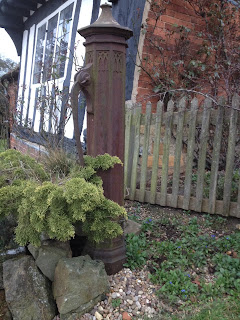Water was one of the most important considerations when locating a settlement. Surface water supplies were unreliable and harboured disease, especially in summer, and springs were found only where geological features permitted. A well which would fill with ground water was usually the solution. They generally gave safe water that could be relied on in all but the severest droughts. Those at the outlying farms of Whitehill and The Rough were over ninety feet deep, with the water sixty feet down. In a drought year this would be much more. The wells in the village, such as the communal wells for the Victorian cottages and Silvester's Cottages, were only about fifty feet deep, with water at around thirty feet. This likely influenced the siting of the village.
During Anglo-Saxon times, a communal well was typically sunk in the village, often on the green. The parish pump was necessarily a focal point for the community and was used to disseminate news and gossip, as the phrase still implies today.
A bucket attached to a rope brought the water to the surface, and hand-operated pumps were later designed. Drawing water was an arduous task for the housewife, especially on Mondays when the laundry was done.
By Tudor times most larger houses had their own well. Most properties in Preston today have their own, now disused, well, although the 19th century cottages along the main street shared a communal well.
One of a handful of pumps surviving in Preston, now used purely for decorative purposes.
Shallower soft-water wells collected rainwater. This was used
for laundry, as the lack of minerals was much better for washing. Boiling hard
water, as a look inside many kettles illustrates today, creates insoluble
and irremovable deposits on all surfaces.
A soft-water well and pump outside
the back kitchen or scullery at Park Farm, where the huge coppers for laundry
were installed. Both probably date from the mid to late 19th
century. Water was drawn from the well
beneath the stone slab. The excess collected in the stone trough and drained
through a grating back into the well.


No comments:
Post a Comment